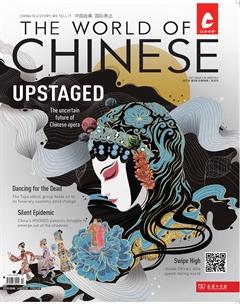ChestnutChicken
TAn Yunfei


Spice up the autumn and prepare for winter with this warm and nourishing dish
秋冬的味道和滋补需求,板栗烧鸡知道
by TAn Yunfei (谭云飞)
Autumn in China doesnt truly begin until you catch the aroma of sugar-fried chestnuts from a roadside stall. Passersby stop to buy the popular snack piping hot out of the wok, even though it sometimes means a half-hour wait for a fresh batch.
The tradition has existed since at least the 13th century, when the scholar Shu Yuexiang (舒岳祥) wrote in his poem “Eating Chestnuts for the First Time (《初食栗》)”: “[Im] happy to see chestnuts as the days start to cool near Chongyang Festival (新凉喜见栗,物色近重阳),” which occurs on the ninth day of the ninth lunar month. He added: “The steamed chestnuts bring warmth on cold nights, and still taste good chewed in hunger the next morning (寒宵蒸食暖,饥晓嚼来香).”
Dishes themed around chestnuts also grow in popularity during the fall, but probably only braised chicken with chestnuts (板栗烧鸡) can rival the street snack. The dish has been claimed as traditional in the provinces of Sichuan—where its eaten with fresh peppers—Hunan, Jiangxi, and northeastern China. These regional varieties differ slightly in their cooking methods, and there are similar dishes in other provinces, such as 栗子鸡 (“chestnut chicken”) from Shandong and 板栗焖鸡 (“chestnuts braised with chicken chunks”), and 栗子焖鸡 (“chestnuts braised with chicken”) in Fujian, Zhejiang, and Shanxi.
Chestnuts have been a popular food in China for at least 2,000 years. According to the ancient textRecords of the Grand Historian(《史记》), in the Spring and Autumn (770 – 476 BCE) and Warring States (475 – 221 BCE) periods, “1,000 chestnut trees in Yan and Qin states…produce a wealth equal to that of a noble entitled to collect taxes from 1,000 households (燕秦千樹栗……与千户侯等).” Han Feizi (韩非子), a philosopher active in the 3rd century BCE, also wrote that people ate chestnuts to stave off hunger during famines.
Nowadays, chestnut trees grow nationwide. The nuts, which are rich in starch and protein, are valued in traditional Chinese medicine as benefiting onesqi(气) while also nourishing the intestines, stomach, and kidneys. As a result, braised chicken with chestnuts is popular in autumn not just due to nostalgia or because of the rich flavors and tender textures of slow-cooked nuts and warming meat. According to medical theories, it also helps to nourish internal organs negatively impacted by hot weather and icy drinks during the summer, and provides people with the nutrition they need to prepare for the cold winter.
Steps:
1. Cut each chicken drumstick into four or five chunks and wash off any blood.
2. Wash the chestnuts. Cut the garlic and ginger into 2-3mm thick slices, and green and red peppers into 3-4cm long segments.
3. Boil the chestnuts in 600ml of water for two minutes and set them aside in a bowl.
4. Heat the oil in a wok. Add the chicken and fry until golden.
5. Add the garlic, ginger, soy sauce, sugar, Shaoxing wine, and 600ml of water, and bring everything to a boil.
6. Add the chestnuts, salt, and pepper powder. Turn down the heat and simmer for 30 minutes.
7. Add the peppers and cook over a high heat for another five minutes before serving.
Ingredients:
200g chestnuts板栗
500gchicken drumsticks雞腿肉
20ml cooking oil 食用油
10g ginger 姜
5 cloves of garlic 蒜瓣
Half a green pepper 青椒
Half a red pepper红椒
15g sugar 白糖
15g Shaoxing wine 绍兴酒
10g soy sauce酱油
5g salt 盐
2g pepper powder 胡椒粉
Photographs by VCG
 汉语世界(The World of Chinese)2021年5期
汉语世界(The World of Chinese)2021年5期
- 汉语世界(The World of Chinese)的其它文章
- China’s Other Vaccine Drive
- 三味书屋
- The Changing Face of YinggeDance
- Upstaged
- SilentEpidemic
- 学中文
